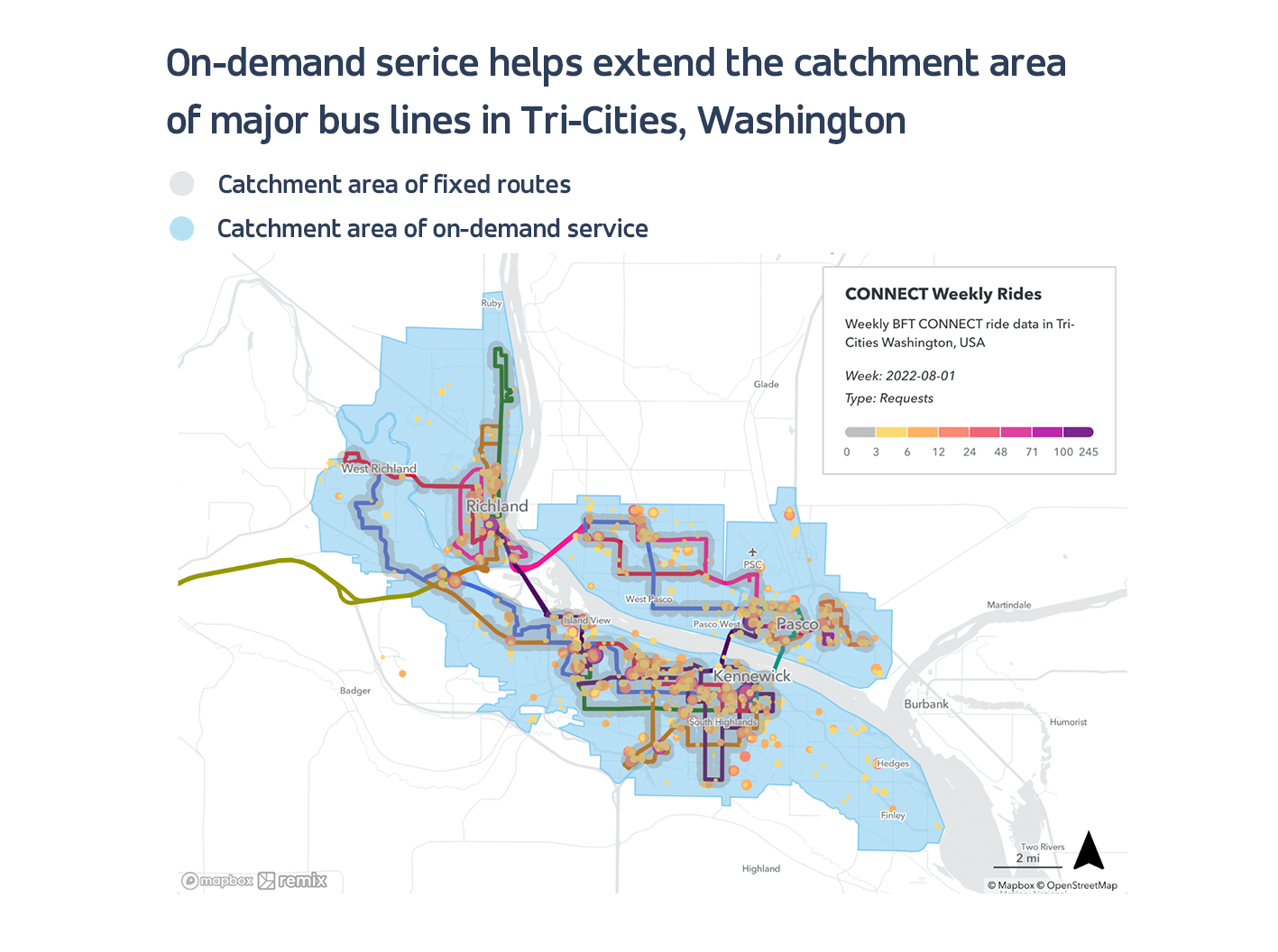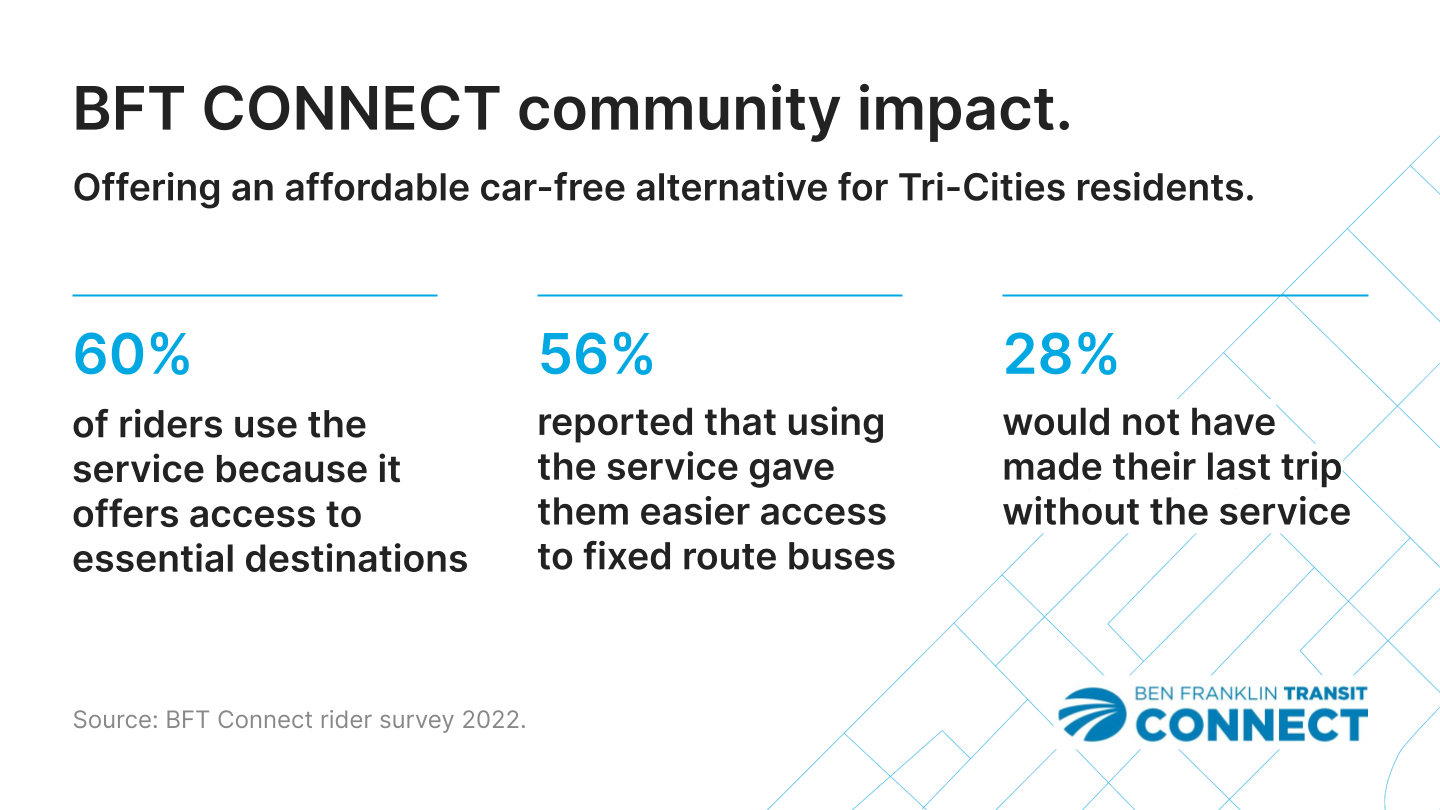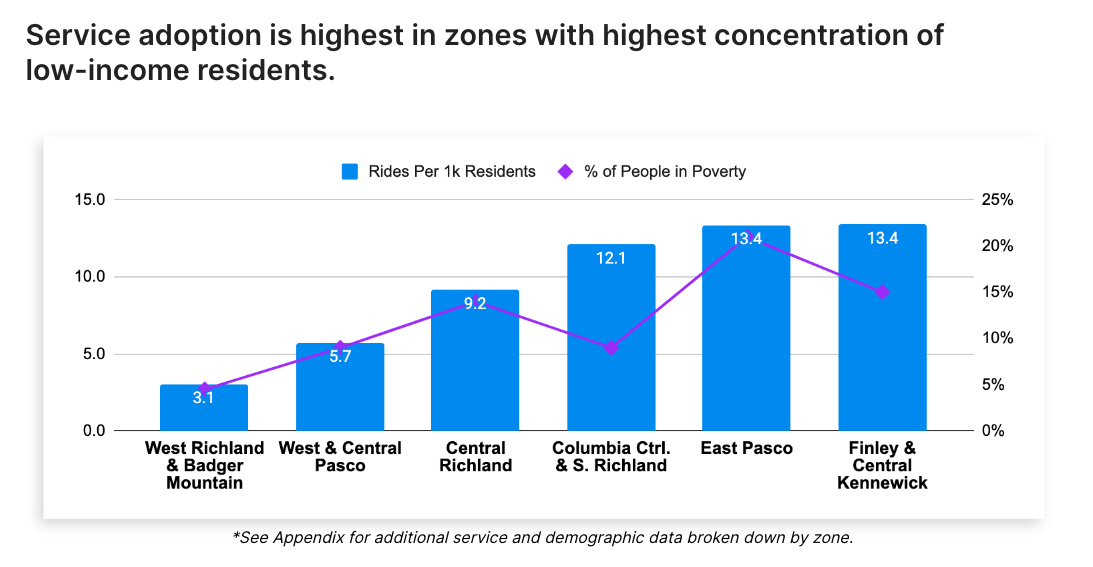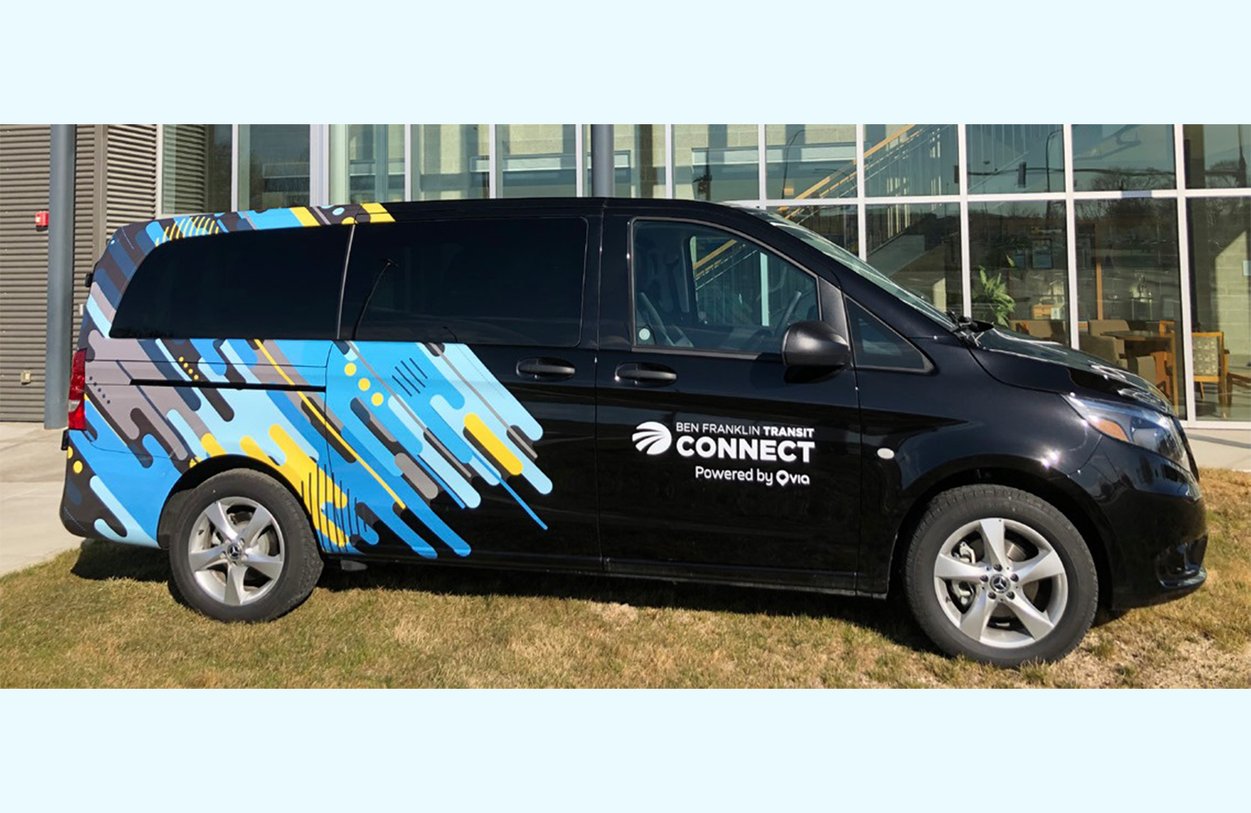For many years, Ben Franklin Transit (BFT), which manages the transit network in Benton County and Franklin County in southeast Washington state, faced a problem: traditional fixed-route transit did not prove adaptable enough to serve the mobility needs of residents in the lower-density cities of Kennewick, Pasco, and Richland. Though BFT operates an extensive fixed-route network, under 30% of the area it serves lies within a reasonable walking distance (~0.2 miles) of a bus stop.
In April 2020, the agency launched BFT CONNECT, a new microtransit service designed to expand the catchment area of the overall transit network and better link community members to public transportation. Microtransit is shared transportation that allows riders to book on-demand trips, and uses technology that dynamically routes vehicles to pick up and drop off riders where they are instead of following a static schedule or fixed route. Costing just $1.50 per ride, CONNECT provides an affordable, convenient way for residents to access transit stops and other essential community resources, such as grocery stores, parks, and medical centers.
Drag the centerline in the slider below to see how fixed routes and on-demand services complement one another in the Tri-Cities area.

Data viz credit: Manyu Jiang
Though BFT offers an extensive fixed route network, the existing transit infrastructure only covers 28% of the Tri-Cities’ 244k population. Mapped in Remix. (Credit: Manyu Jiang)
The flexibility that made BFT CONNECT an appealing option during the pandemic allows it to continue to grow and adapt today. As BFT planner Kevin Sliger puts it, “CONNECT allows BFT to provide service to low-density, low-demand areas that otherwise would not be cost-effective to serve with fixed route. It also acts as a barometer of demand that the Planning staff uses to determine if future fixed route service is needed in developing areas. From the customer perspective, it provides freedom, flexibility, and assurance that multiple mobility options are available,” he said.
Extending coverage beyond fixed routes.
In two years since launch, CONNECT has experienced impressive ridership growth and remained resilient, even through the community’s unpredictable travel needs during the pandemic. Compare the second quarter of 2022 (April - June) to the same quarter in 2021: ridership has increased threefold while the number of unique riders has risen by 350%. The community adoption rate, calculated by rides per 1k local residents, also increased significantly. Now, more than 10 rides are provided for every 1k residents.

The vast majority of the BFT CONNECT trips are within 0.1 miles of the fixed line stops. It has helped local residents access the broader BFT transit network in the past two years. Mapped in Remix.
Ridership data also points to a strong first- and last-mile use case, with nearly 80% of riders reporting that they use this on-demand service to connect to other forms of transit. Four out of five top points of interest in June are transit hubs, including 22nd Ave Transit Center, 3 Rivers Transfer Center, Dayton Transfer Point, and Knight St. Transit Center. Easier access to existing fixed-route bus lines was voted as one of the major benefits from using CONNECT, followed by reduced commuting time and cost savings.
In addition to linking people to existing transit infrastructure, BFT CONNECT has expanded community members’ access to the entire Tri-Cities region. With the introduction of this flexible service, riders can book a trip whenever they need it, as long as the trip starts or ends at a designated point of interest — transit hubs, schools, grocery stores, and other key locations — within the service zone. They especially appreciate the new freedom to reach popular destinations that were not easily accessible or covered by existing BFT bus routes. One rider said, “I could get the water and necessities home thanks only to BFT CONNECT.”
Community impact.
BFT is an essential resource for community members who need transit most:

Affordability and access are the themes that emerged as riders told us about themselves and their riding habits:
- 90% of riders report their annual household income is less than $60k, making car ownership or private transportation more difficult to obtain.
- 65% of respondents say they use CONNECT for its affordability, and 56% said the service gave them easier access to fixed route buses.
- 95% of ridership would be disappointed if they could no longer use CONNECT. For 26% of the riders, it is their only viable transit option.

On top of all that, BFT CONNECT has seen the highest service adoption rate in lower-income areas such as East Pasco and Finley/Central Kennewick, fulfilling the service’s goal of better serving those who were historically underserved by other mobility options. To date, the service has carried over 93k riders, with an average rider rating as high as 4.8 out of 5 stars. As one rider reported in the survey, “I love this service, I've been without a car since August of last year, and being able to go buy groceries and 12 packs of soda is as easy as when I had my own car. Can't take the bus with several bags and boxes of soda. Keep up the great work.”

Data Journalist




